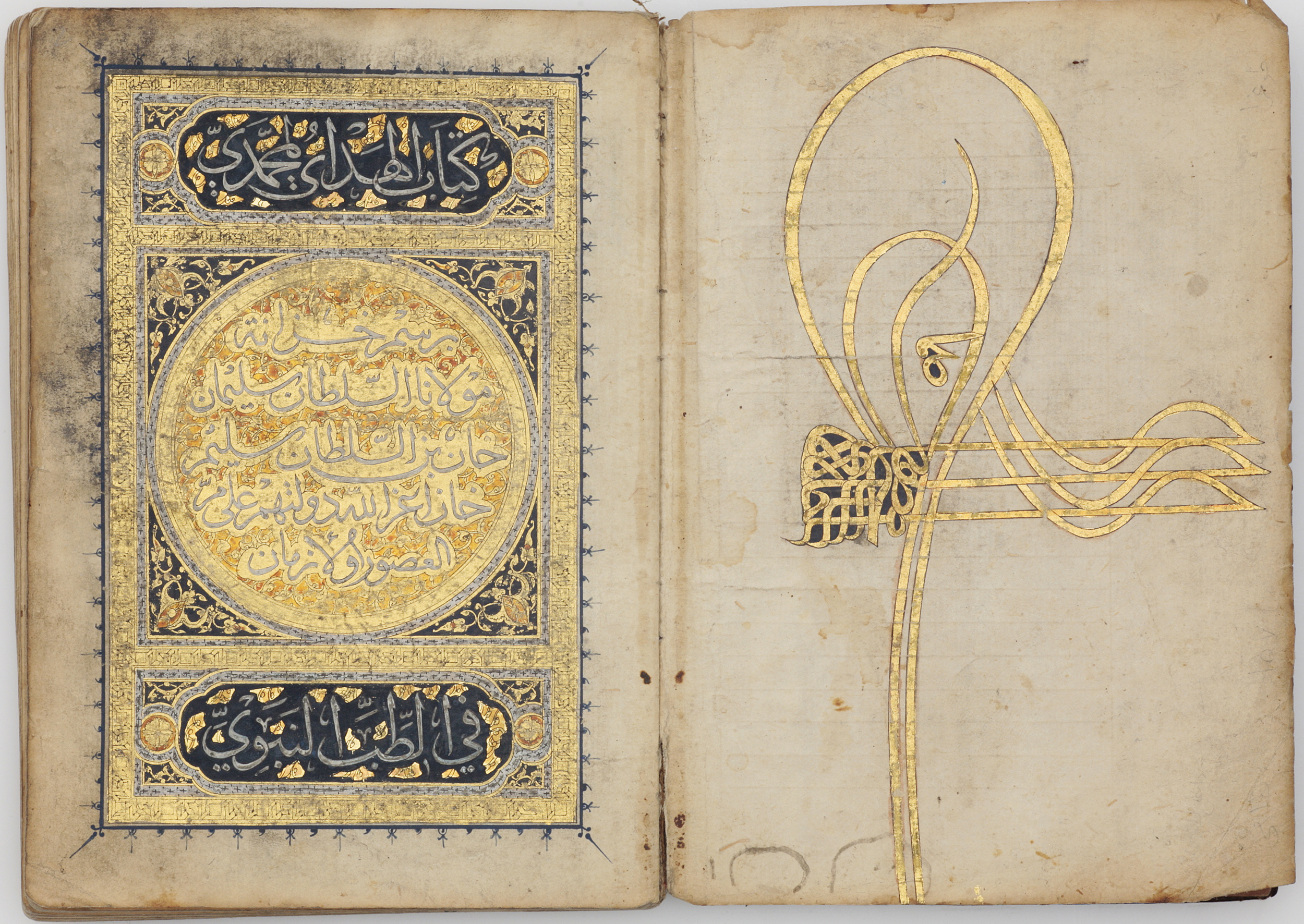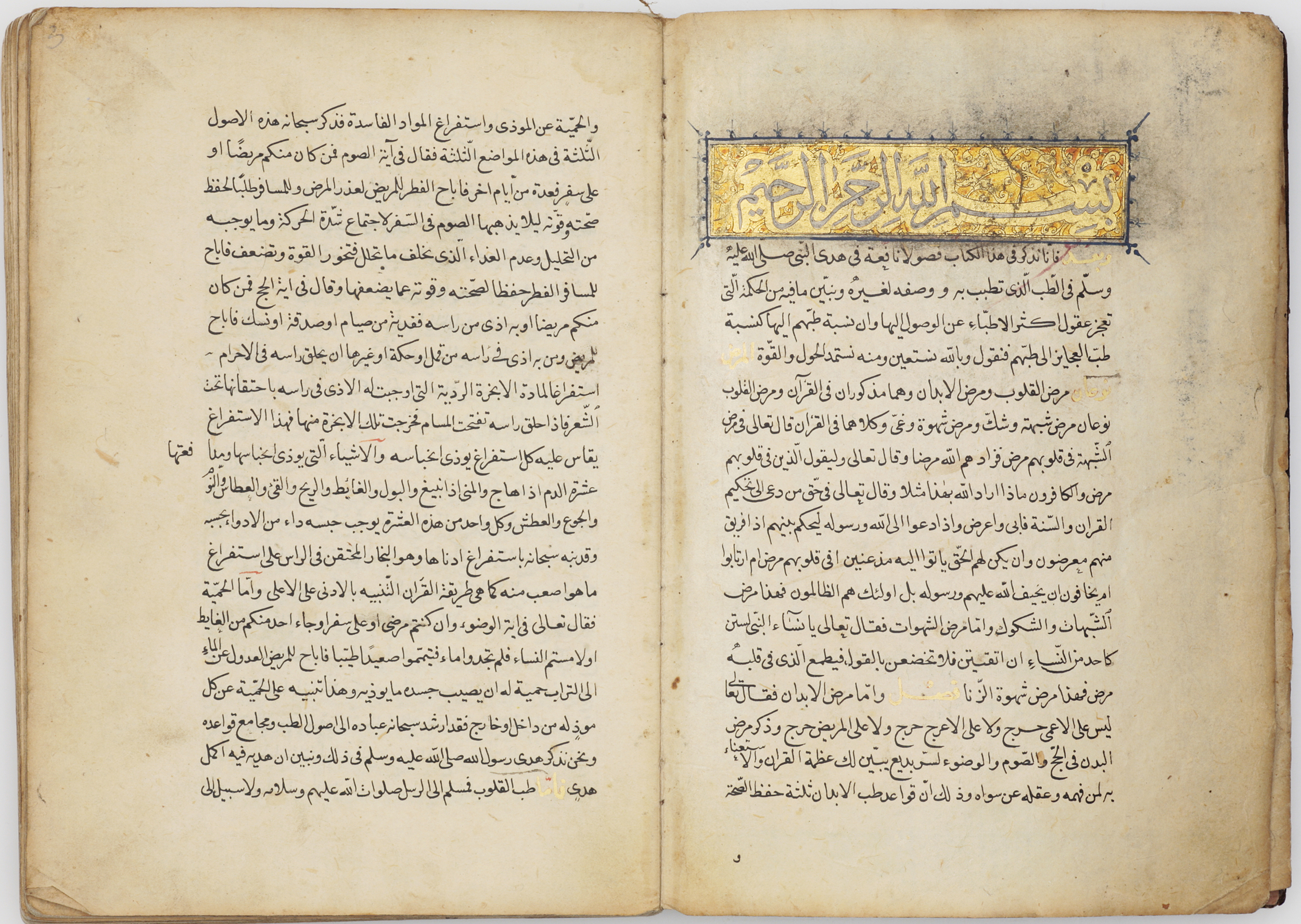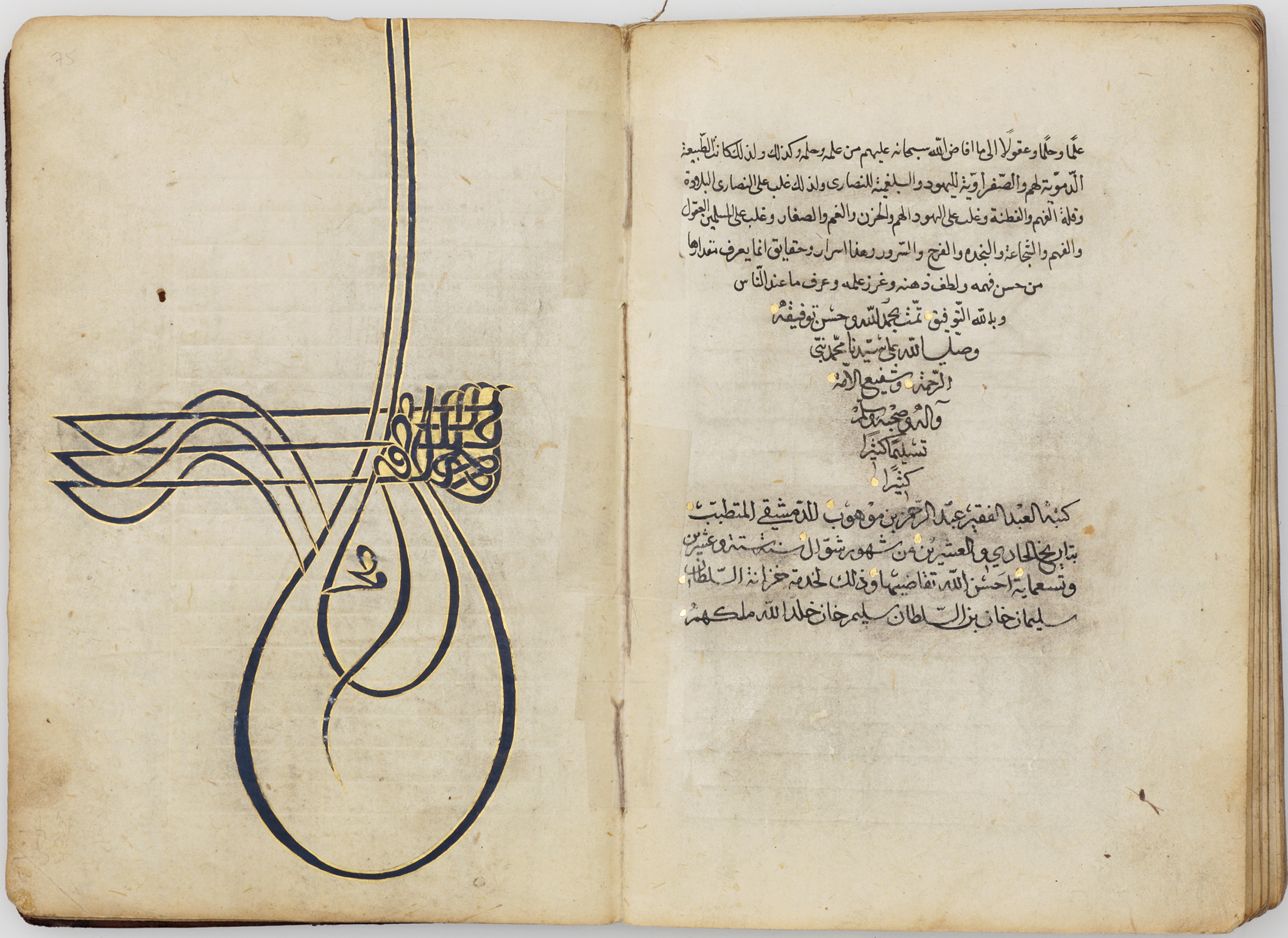 Print Page
Print Page
 Print Page
Print Page
Location: probably Damascus
Materials: ink, gold and opaque watercolour on paper; contemporary brown leather binding with stamped, painted and blind-tooled decoration
Dimensions: 76 folios; 17.5 x 12.1cm
Accession Number: MSS 568
Other Notes:
‘Prophetic medicine’ was the creation of Muslim clerics, based on the Qur’an and practices of the Prophet Muhammad as recorded in the hadith, deliberately avoiding the essentially Greek tradition of classical Islamic medicine. The treatise includes prescriptions on diet, simple drugs like honey, bloodletting, and cautery, but it does not countenance surgery and prohibits both wine and soporifics. The author, the Hanbali theologian Ibn Qayyin al-Jawziyyah (d 1350), was a prominent defender of traditional religious propriety. His treatise is also known as Zad al-Ma‘ad fi Hadi Khayr al-‘Ibad, or simply as al-Tibb al-Nabawi. The title given in the present copy, Kitab al-Hadi al-Muhammadi fi’l-Tibb al-Nabawi (‘Book of the Muhammadan Path in Prophetic Medicine’) is unusual, but there is some evidence that it was used by some writers on the subject.
The volume bears an illuminated dedication to the Ottoman Süleyman the Magnificent. It also bears the sultan’s monogram (tughra), once on the first page in blue outlined in gold, and once on the last, where it is in gold outlined in blue. Süleyman is not known to have resorted to prophetic medicine and had both Muslim and Jewish physicians at his court, but the duplication of his monogram, rather than his seal, indicates how highly he prized the manuscript.
Script:
text copied in naskh script, with 21 lines to the page
Bibliography:
F. Maddison & E. Savage-Smith, Science, Tools & Magic, The Nasser D. Khalili Collection of Islamic Art, volume XII, Part One, London 1997, cat.11, pp.40–41.
J.M. Rogers, The Arts of Islam. Masterpieces from the Khalili Collection, London 2010, cat.277, p.242.


